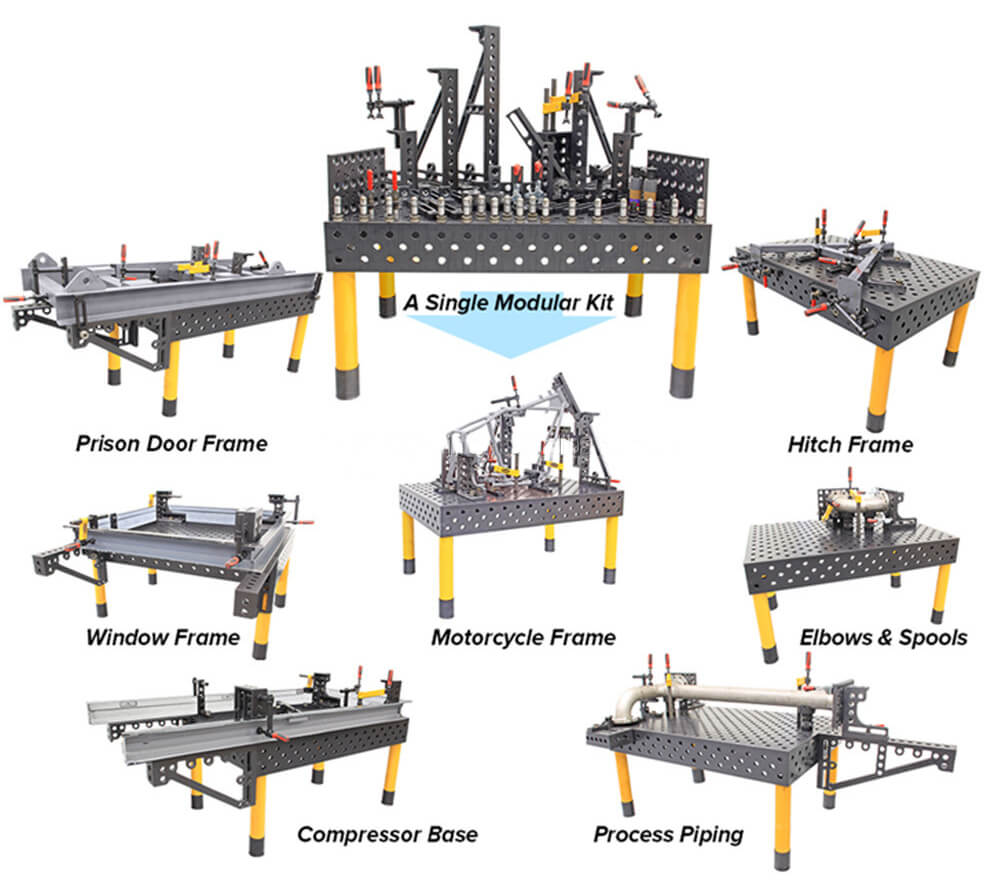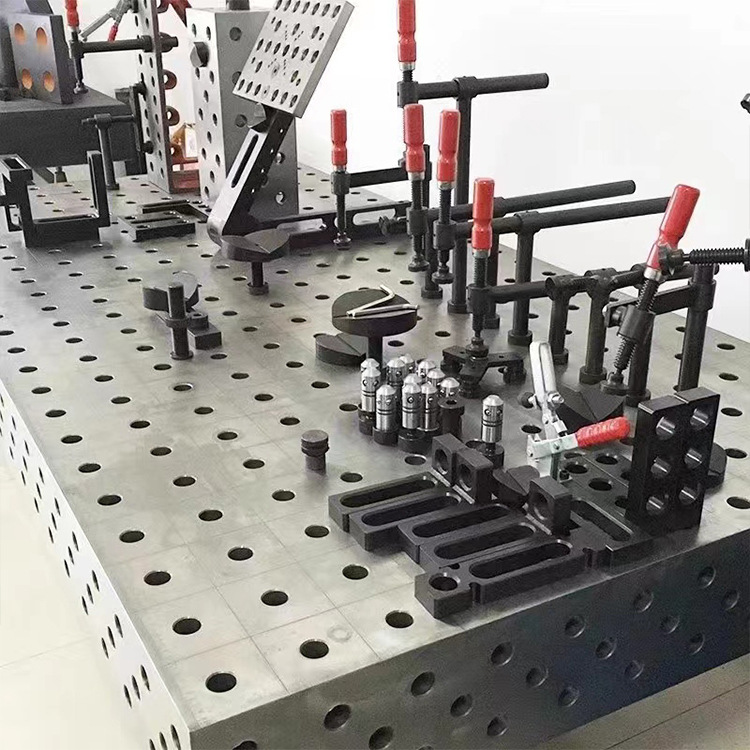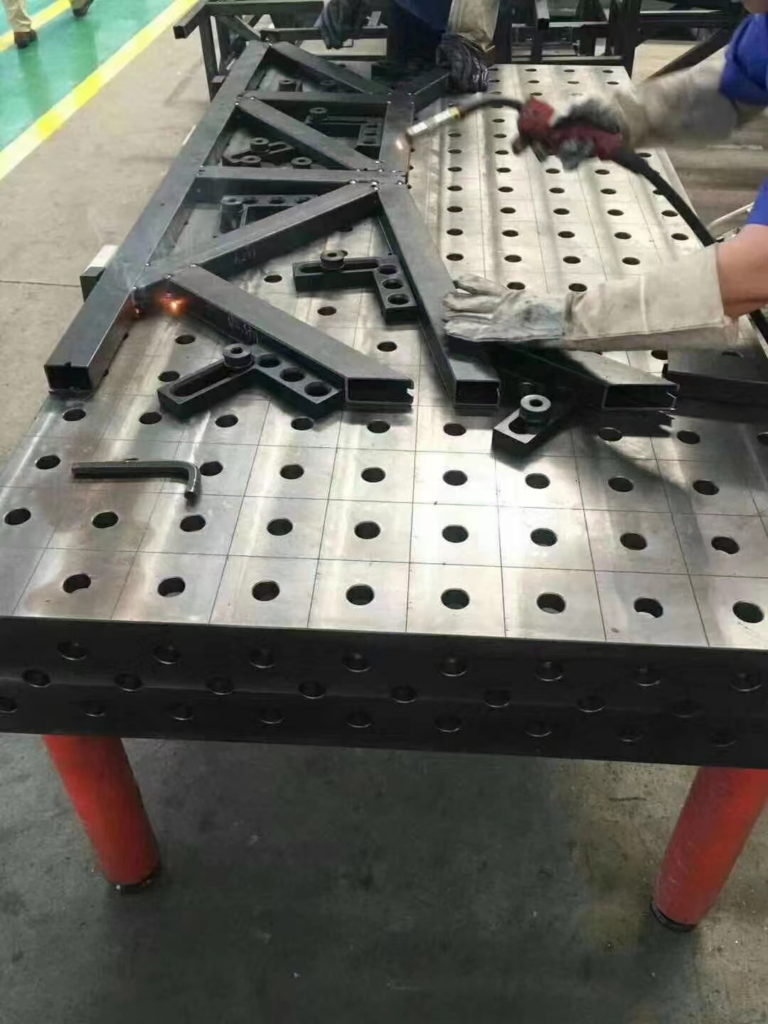How Does a 3D Welding Table Work?
The 3D welding table has a singular platform that houses five working planes. The five working surfaces are the topmost horizontal surface, and four vertical surfaces at four sides.
With a 3D welding table, you can enjoy high modularity and adjustment opportunities. You can observe equal-sized holes with equal spacings on each of the surfaces. The clamping parts are inserted into the table and fixture holes to clamp, adjust and support the workpiece.
You can also shift the clamps up and down to position the workpiece at elevated heights from the table to produce a 3D-shaped object. The clamps are flexible and rotate around their own axis to provide adjustable support on the weldment.
To adjust the workpiece at variable angles, you can use the angle adjuster to provide an angle adjustment range of 0° to 270°. You can even extend the size of the table very quickly. The working surfaces on each side are for the extension of the work area and positioning features.
With the proper fixtures and a 3D welding table, you can perform welding operations on virtually every possible shape. To understand more about how a 3D welding table works, you can see the photos below


